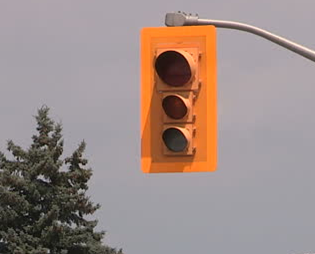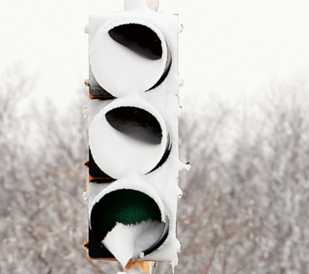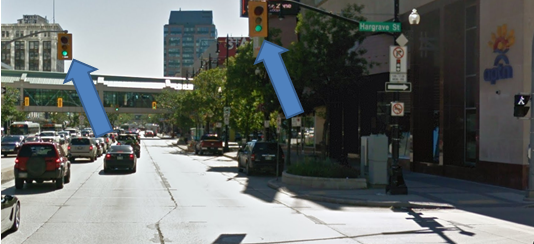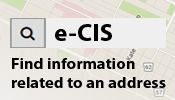Traffic Signals FAQ
Traffic signals help keep motorists and pedestrians safe. They also pose many questions for citizens. Learn more about traffic signals from our FAQ below, or select an item from the left-hand menu for information specific to emergency vehicles and intersection cameras.
The purpose of the analysis is to investigate if the request made by the customer can be accommodated by the signal system. All traffic signals are timed as a system and more congestion can result if one traffic light along a road is inappropriately modified.
To request a change in traffic light timing, please contact 311.
It is not possible to report the exact time of the beginning and end of every green light.
To request information about the current operation of a traffic signal, please contact 311.
To obtain a Traffic Signals Clearance contact 311. When you call you will be asked to provide your contact information and the location where you plan to excavate or dig.
A representative of the Traffic Signals Branch will be scheduled to attend the location (you will be informed of the date and approximate time of his/her arrival) and he/she will mark the location of where the city's underground equipment is approximately located.
Please note that you should make arrangements with other utilities to obtain their underground clearances. More information is available on the Click Before You Dig website.
Normally, one or more "loops" (detectors in the pavement) would be installed in each lane to detect traffic. The use of a single radar device reduces the installation of these detectors and helps improve the operation of the traffic lights.
Many detector zones can be programmed or modified through using a radar device without interrupting traffic or cutting the pavement. Because of these benefits the city is continuing to evaluate their use as a viable means of detecting and controlling the flow of traffic.
These special lights are called Transit Priority Signals and they consist of a white vertical light that is on top of the green light on the right side of the signalized intersection.
The duration of the Transit Priority Signals is relatively short because the intent is to help bus drivers get a head start over the traffic next to them and get quicker access to that lane.
Pedestrian Crossings: For safety, enough time must be allowed for a pedestrian to cross the street from curb-to-curb, walking at a pace of about three to four feet per second. The pedestrian crossing time can often exceed the time required by vehicles at minor cross streets. Long pedestrian crossing times often reduce the available green time along major routes, particularly crossings of wide streets such as Bishop Grandin or Kenaston Boulevard.
Cross Traffic: Like pedestrian crossings, enough time must be allocated to clear the waiting traffic on the cross street. The heavier the cross traffic, such as experienced near schools and businesses, the more time that is needed to clear them through the intersection and the less time that is available for the green light in the "coordinated" direction.
Left-Turn Signals: Where left-turning traffic is especially heavy and/or the amount of opposing traffic is so heavy that there are not enough gaps in the traffic to safely complete a left-turn, protected left-turn signals are usually installed. The amount of time for protected left-turning traffic also limits the time permitted for the "through" traffic flow in the opposite direction.
Two-Way Traffic Flow: The distance between traffic signals and the speed of the traffic determine the way in which the green lights at the next traffic signal line up. When the spacing is not equal between traffic signals, the green lights may only line up well in one direction. When this happens, the city tries to line up the green lights in the direction that has the most traffic. The traffic in the other direction may have to stop occasionally as a result.
Early Return to Green: When vehicle demand on a side street is low the main street reverts back earlier than expected to a green signal. This causes some vehicles to arrive earlier than anticipated at the next traffic signal.
There are a couple of scenarios where you may find there is no light or the light is blocked by something. Two examples would be a hydro outage or snow build-up.
 |
 |
Step 1: Look for an alternate signal. Most intersections have a minimum of two signal heads per direction. Note that dedicated turn signals have a black surround.

Step 2: If no lights are visible or you are unsure, you should treat the intersection as a four-way stop and proceed with extreme caution. You can always look at the pedestrian crossing light as a clue but remember, if you are struggling to see the signal light, most likely others are too. Treat as a four-way stop and take extra care.

